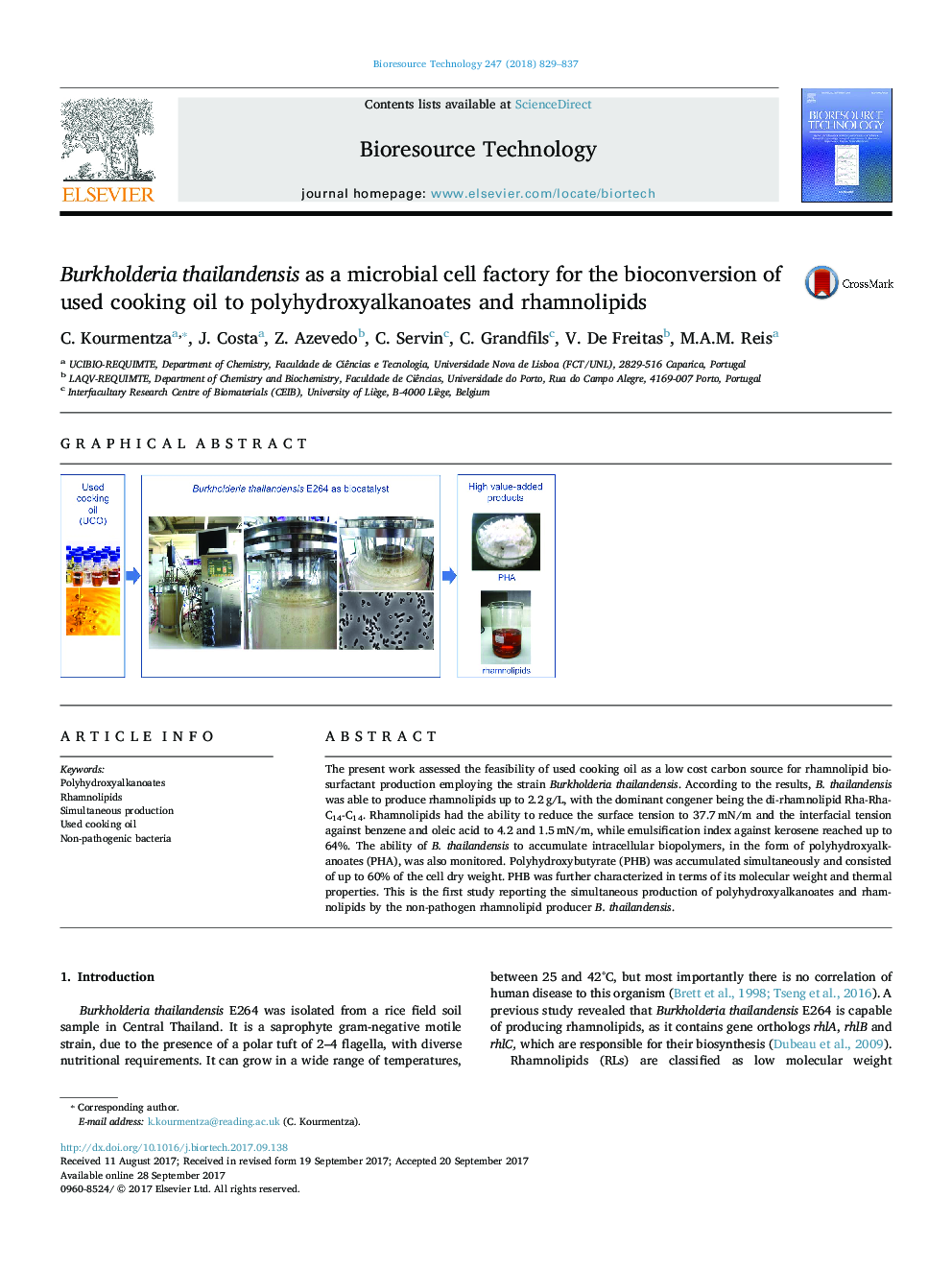| Article ID | Journal | Published Year | Pages | File Type |
|---|---|---|---|---|
| 4996711 | Bioresource Technology | 2018 | 9 Pages |
â¢Rhamnolipids production was evaluated employing the non-pathogen B. thailandensis.â¢Used cooking oil, deriving from sunflower, was exploited as carbon source.â¢Co-production of PHB and rhamnolipids by B. thailandensis was demonstrated.â¢Both PHB and RLs were characterized regarding their physicochemical properties.â¢B. thailandensis used as biocatalyst may result in reducing their fermentation cost.
The present work assessed the feasibility of used cooking oil as a low cost carbon source for rhamnolipid biosurfactant production employing the strain Burkholderia thailandensis. According to the results, B. thailandensis was able to produce rhamnolipids up to 2.2â¯g/L, with the dominant congener being the di-rhamnolipid Rha-Rha-C14-C14. Rhamnolipids had the ability to reduce the surface tension to 37.7â¯mN/m and the interfacial tension against benzene and oleic acid to 4.2 and 1.5â¯mN/m, while emulsification index against kerosene reached up to 64%. The ability of B. thailandensis to accumulate intracellular biopolymers, in the form of polyhydroxyalkanoates (PHA), was also monitored. Polyhydroxybutyrate (PHB) was accumulated simultaneously and consisted of up to 60% of the cell dry weight. PHB was further characterized in terms of its molecular weight and thermal properties. This is the first study reporting the simultaneous production of polyhydroxyalkanoates and rhamnolipids by the non-pathogen rhamnolipid producer B. thailandensis.
Graphical abstractDownload high-res image (267KB)Download full-size image
